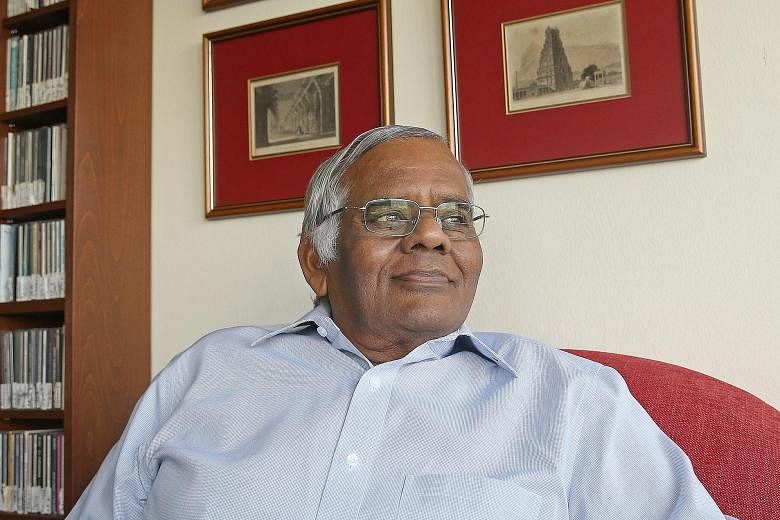When Mr N. Subramaniam attended his first meeting of the Singapore Film Society in 1964, he arrived as a casual movie-lover and left as an elected office-bearer.
"I really enjoyed going to movies and one of my friends told me one day that there was an annual general meeting of the Singapore Film Society and we could join at the door," he recalls.
"We went to the meeting, which was not well-attended - fewer than 20 people - and I found myself elected honorary treasurer, having been a member for less than an hour!"
The society was in the news this week in 1965 when it put out a call for new members on the occasion of its 10th anniversary.
Mr Subramaniam, 77, stayed on the society's executive committee for more than a decade, finally serving as president before stepping down in 1984.
He said the society was started by British expatriates who wanted to see films not shown in regular cinemas. Since censorship laws were applied strictly, only members could attend the society's screenings. Singaporeans and others were welcome, and the earliest members were university lecturers and people from the diplomatic community, he says.
In the 1960s and 1970s, the society had between 100 and 200 members and they would meet on the last Sunday of the month to watch a movie at the Drama Centre, which was then at Fort Canning.
"There was not much interaction between the members," says Mr Subramaniam.
"They would usually come to the show and then leave. The committee did try to organise some talks about film appreciation, but since attendance was poor, these were not continued."
The committee met regularly to choose films from the catalogues of distributors in London.
"The films were usually art movies of well-known directors from both Europe and Asia. Asian directors such as Akira Kurosawa and Satyajit Ray were chosen because they were popular.
"European directors included Jean-Luc Godard, Francois Truffaut, Federico Fellini and Ingmar Bergman."
Mr Subramaniam introduced monthly instalments of membership dues while in office, so that those who did not want to watch a movie every month could still see specific films, and the society could boost its finances.
Even so, the society was maintaining a delicate balancing act with its finances. "The hire of films and air freight to and from London became very expensive. We were always working on a shoestring basis," he says.
While he does not watch many movies now - the former partner of an accounting firm mainly views classic Hollywood movies on television these days - he remembers being taken to task on occasion for the society's movie choices, and being told some were too risque.
"Sometimes people would complain about the movies we were bringing in. Once, someone I was sitting next to at a dinner asked me why we had screened a particular Japanese movie that he had found distasteful," he recalls.
"I told him, that's the culture of that village in Japan, and we have to be open to all sorts of movies from different cultures. He responded that we didn't want that sort of culture in Singapore."
Mr Subramaniam points out that the principal aim of the society was to provide an opportunity to show films that the commercial cinemas would not bring in because they would fail at the box office. "As long as that was the goal, we would try and bring in films from as wide a variety of countries as possible."
Jennani Durai

